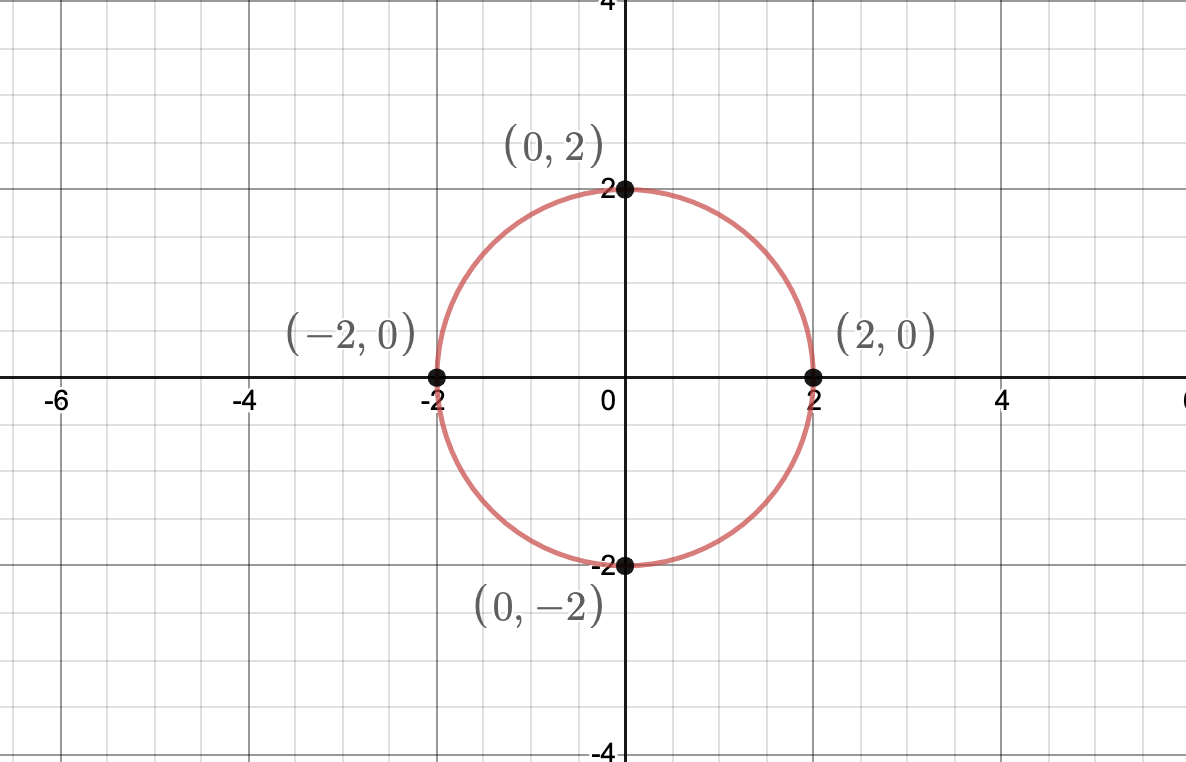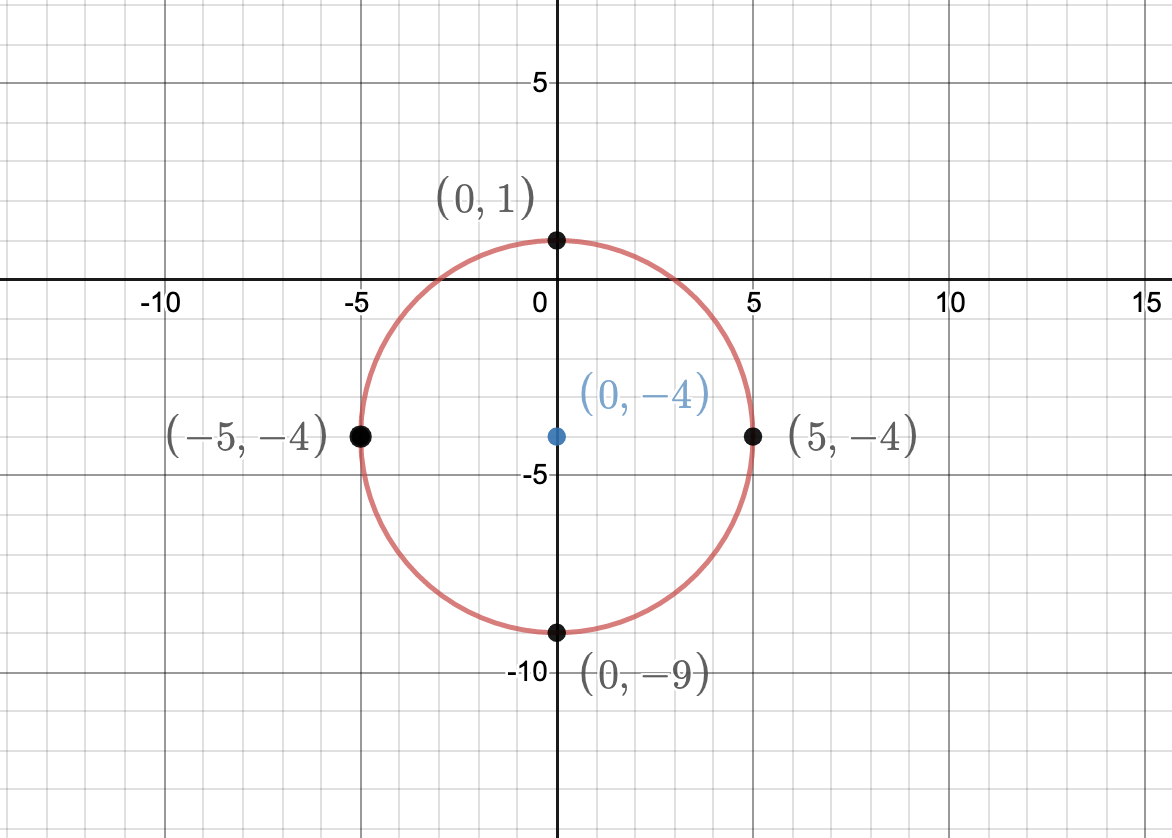Hi Everyone!
On this page you will find some material about Lesson 11. Read through the material below, watch the videos, and follow up with your instructor if you have questions.

Lesson 11: Distance Formula, Midpoint Formula, and Circles & Perpendicular Bisector
Table of Contents
Resources
In this section you will find some important information about the specific resources related to this lesson:
- the learning outcomes,
- the section in the textbook,
- the WeBWorK homework sets,
- a link to the pdf of the lesson notes,
- a link to a video lesson.
Learning Outcomes.
- Find the distance between two points.
- Given two points, find the midpoint.
- Recognize the equation of a circle.
- Write the equation of a circle in standard form.
- Given the standard equation of a circle, identify the center and the radius/diameter.
- Given the center and the radius/diameter, write the equation of the circle.
- Given the center and the radius/diameter, graph the circle and label four points.
- Find the perpendicular bisector os a line segment.
Topic. This lesson covers Section 9.1: Distance Formula, Midpoint Formula, and Circles.
WeBWorK. There are three WeBWorK assignments on today’s material:
DistanceFormula
CircleLab
Circles
Lesson Notes.
Video Lesson.
Video Lesson 11 – part 1 (based on Lesson 11 Notes -part 1)
Video Lesson 11 – part 2 (perpendicular bisector)
Warmup Questions I
These are questions on fundamental concepts that you need to know before you can embark on this lesson. Don’t skip them! Take your time to do them, and check your answer by clicking on the “Show Answer” tab.
Expand $(x-h)^2$.
$$(x-h)^2=(x-h)(x-h)=x^2-xh-xh+h^2=x^2-2xh+h^2$$
Rewrite $x^2+6x-7=0$ as $(x-h)^2=a$ by completing the square.
$$x^2+6x-7=0$$
$$x^2+6x=7$$
$$x^2+6x+9 = 7 + 9 $$
$$(x+3)^2=16$$
$$(x-(-3))^2 = 16$$
So $h=-3$ and $a=16$.
Review I
If you are not comfortable with the Warmup Questions, don’t give up! Click on the indicated lesson for a quick catchup. A brief review will help you boost your confidence to start the new lesson, and that’s perfectly fine.
Need a review? Check
Quick Intro I
This is like a mini-lesson with an overview of the main objects of study. It will often contain a list of key words, definitions and properties – all that is new in this lesson. We will use this opportunity to make connections with other concepts. It can be also used as a review of the lesson.
A Quick Intro to Distance Formula, Midpoint Formula, and Circles
Key Words. Distance formula, midpoint formula, circle, center, radius, diameter, standard equation of a circle.
$\bigstar$ The mipoint of the points $(x_1,y_1)$ and $(x_2,y_2)$ is the point $M$ that is halfway on the segment line connecting them. It is given by
$$M=\left(\dfrac{x_1+x_2}{2},\dfrac{y_1+y_2}{2}\right).$$
$\bigstar$ The distance between the points $(x_1,y_1)$ and $(x_2,y_2)$ is
$$d=\sqrt{(x_2-x_1)^2+(y_2-y_1)^2}.$$
$\bigstar$ Consider a circle with center at $(0,0)$ and radius $2$.

How far are the points $(2,0)$, $(-2,0)$, $(0,2)$, $(0,-2)$ from the center $(0,0)$? The answer is 2, which is the radius.
This circle can be described as the collection of all points $(x,y)$ whose distance from $(0,0)$ is $2$. We can use the distance formula:
$$d((x,y),(0,0))=2$$
$$\sqrt{(x-0)^2+(y-0)^2}=2$$
$$\sqrt{x^2+y^2}=2$$
$$x^2+y^2=4$$
So the equation of the circle with center at $(0,0)$ and radius $2$ is $x^2+y^2=4$. Note the number on the right hand side $2^2$ is the square of the radius $2$.
$\bigstar$ In general, a circle with center at $(h,k)$ and radius $2$ is the collection of all points $(x,y)$ whose distance from $(h,k)$ is $r$:
$$d((x,y),(h,k))=r$$
$$\sqrt{(x-h)^2+(y-k)^2}=r$$
$$(x-h)^2+(y-k)^2=r^2$$
The standard equation of the circle with center at $(h,k)$ and radius $r$ is $$(x-h)^2+(y-k)^2=r^2.$$
$\bigstar$ If you are given $(x+1)^2+(y-2)^2=2$, would you recognize it as an equation of a circle? If so, what is the center? And the radius? How about $x^2+y^2+4x-6y-7=0$? These are some of the examples you will see in the video.
Video Lesson I
Many times the mini-lesson will not be enough for you to start working on the problems. You need to see someone explaining the material to you. In the video you will find a variety of examples, solved step-by-step – starting from a simple one to a more complex one. Feel free to play them as many times as you need. Pause, rewind, replay, stop… follow your pace!
Video Lesson 1
A description of the video
In this video you will see the following circles:
- $x^2+y^2=r^2$
- $(x-2)^2+y^2=r^2$
- $x^2+(y-1)^2=r^2$
- $x^2+(y+2)^2=9$
- $(x+1)^2+(y-2)^2=2$
- $x^2+y^2+4x-6y-7=0$
Try Questions I
Now that you have read the material and watched the video, it is your turn to put in practice what you have learned. We encourage you to try the Try Questions on your own. When you are done, click on the “Show answer” tab to see if you got the correct answer.
Use the distance formula to find the distance between the points $(-4,3)$ and $(2,1)$.
The distance between $(x_1,y_1)=(-4,3)$ and $(x_2,y_2)=(2,1)$ is
$$d= \sqrt{(x_2-x_1)^2+(y_2-y_1)^2)}$$
$$d=\sqrt{(2-(-4))^2+(1-3)^2} $$
$$d=\sqrt{6^2+(-2)^2} $$
$$d=\sqrt{36+4} $$
$$d=\sqrt{40} $$
$$d=2\sqrt{10} $$
Write an equation of a circle centered at $(2,-1)$ with a diameter of $8$.
If the diameter is $8$, then the radius is
$$r=\dfrac{\text{diameter}}{2} = 4.$$
The equation of a circle with center $(h,k)=(2,-1)$ and radius $r = 4$ is
$$(x-h)^2+(y-k)^2 = r^2$$
$$(x-2)^2+(y-(-1))^2 = 4^2$$
$$(x-2)^2+(y+1)^2 = 16$$
Try Question 3
Identify the center and the radius of the circle given by the equation
$$x^2+y^2+6y-9=0.$$
Graph the circle and identify four points on it.
$$x^2 +y^2+8y-9 = 0 $$
$$x^2 + y^2+8y = 9 $$
$$x^2+ y^2+8y +16 = 9+16$$
$$(x-0)^2+(y+4)^2 = 25$$
The center is $(0,-4)$. The radius is $\sqrt{25}=5$.

The points $(-5,-4)$, $(5,-4)$, $(0,1)$ and $(0,-9)$ are on the circle.
WeBWorK
You should now be ready to start working on the WeBWorK problems. Doing the homework is an essential part of learning. It will help you practice the lesson and reinforce your knowledge.
WeBWork
It is time to do the homework on WeBWork:
DistanceFormula
CircleLab
Circles
When you are done, come back to this page for the Exit Questions.


